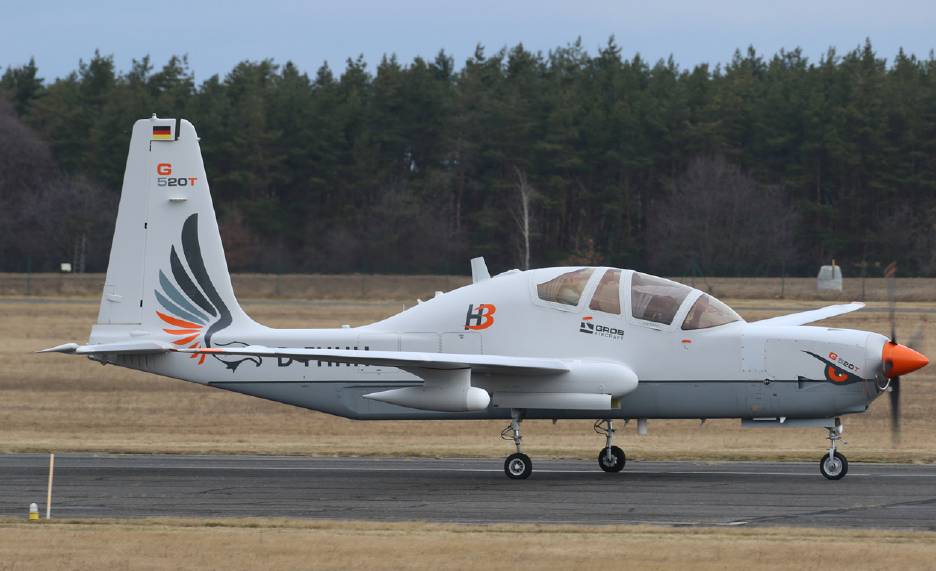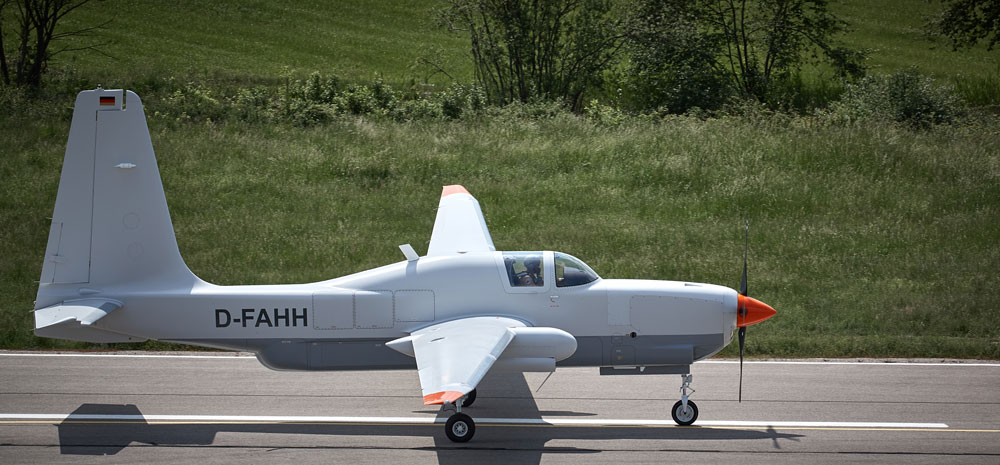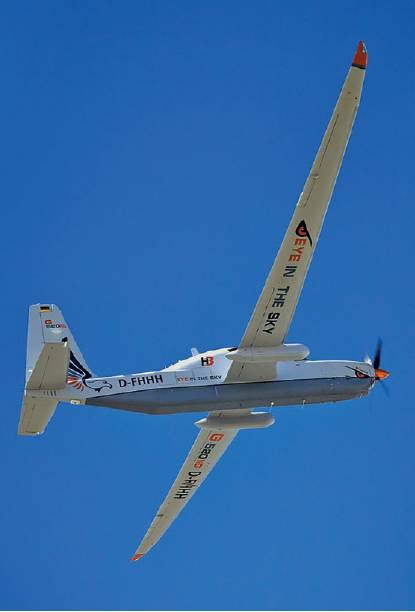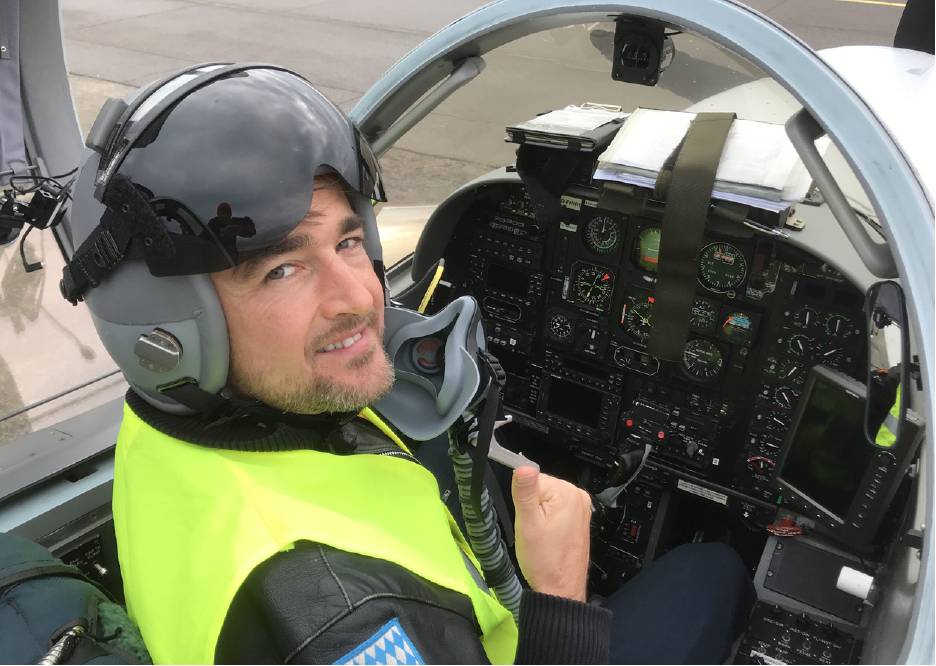High-flying glider tug
As part of the Airbus Perlan II experiment Airborne Resources Inc’s Arne Vasenden used his Grob 520 N5410 for the highest-ever known glider tow. Perlan II is a pressurised, two-place, space capsule with glider wings designed to use only the power of stratospheric mountain waves to fly as high as 90,000ft.”
The aircraft pulled the Airbus Perlan II from 20 August to 12 September 2018 into the skies over Patagonia, Argentina. Basically, Arne gave the Perlan II a ‘leg-up’ to the stratosphere without the glider pilots toiling for hours to get up there. After the first test flight when Vasendan took the aircraft up to just 11,000ft, to check out conditions and the new towing system customised for the G 520, the next eight went up to 40,000ft or above. During the last mission on 12 September, Vasenden took the G 520 up as high as 45,100ft, where it released the Perlan II which then climbed another 20,000ft up to 65,000ft before returning to Earth. It is probably appropriate here to mention that the Perlan project team was awarded a bronze medal by the Royal Aeronautical Society on 26 November 2018 in recognition for ‘its notable contribution to the advancement of aerospace’.
New generation modifications
 The dual-seat G 520T D-FHHH is involved in payload trials and is playing a part in the aircraft’s continued evolution. The grey area below the black line is a modular payload compartment which can be detached from the aircraft. Alan Warnes
The dual-seat G 520T D-FHHH is involved in payload trials and is playing a part in the aircraft’s continued evolution. The grey area below the black line is a modular payload compartment which can be detached from the aircraft. Alan Warnes
While the 1478hp Garrett TPE331-14F (flat rated to 750 SHP) is the aircraft’s current power plant, in the new generation G 520NG it would be replaced by the modern Pratt & Whitney PT-6 turboprop. It does not have the fuel benefits of the Garrett engine and only has a ceiling of 45,000ft but Tom explains why this is preferred: “We listen to our customers and the engine is a big price point for this aircraft. The original TPE331 could get you up to 50,000ft to look 250 miles beyond line of sight (BLOS), whereas the cheaper PT-6 will only fly you up to 45,000ft but you are still seeing 235 miles.” He added: “For every 5,000ft you climb, you gain 15nm of BLOS but is that worth the cost of a pressure suit and the necessary life support equipment? Our potential customers don’t think so and most don’t have the equipment to see that far anyway.”
H3Grob has modified the Grob 520T with a total-authority autopilot, thus converting it into an optionally piloted vehicle (OPV), with a side-stick installed in the rear cockpit for the first flights to control the autopilot. With Tom sitting in the aircraft as the pilot in control, the 520T was flown by an operator in the ground station or via the flight management system flight plan. Around 50hr of flight-testing has been completed so far.
The OPV gives you the option to fly the aircraft in controlled airspace with a rated pilot and, when you are in a ‘war zone’, you take the pilot out and control it from the ground
The single-seater Grob 520NG (10005 /D-FAHH) has been upgraded with a Garmin 600 digital glass cockpit and there are plans to modify the dual seater with a new GenesyS system. The optional operator console in the rear cockpit can offer two large, high resolution 23” touch screen displays, plus two foldable 12” side displays. The sensor operator can conveniently work with a full keyboard, hand controller units and a camera grip. The rear cockpit could be alternatively configured in a dual role mode for platform training or multi-pilot missions.
On the G 520NG Tom said, “We have a lead in time of 18 months to build an aircraft and we already have a mock-up built by tools we have, to verify the mould. We are optimistic that it will go into production.” But why would a customer opt for a Grob 520NG rather than say, a Global Hawk? “We are basically a lot cheaper than a Global Hawk, which costs around $280m without the sensor package, plus 20 guys to operate it. The G 520NG with sensor suite – radar systems and datalink, would probably cost a fraction of that and the big bonus for some customers is it would be ITAR free.” Tom added, “The customer could have a 24 hour persistent surveillance with three aircraft flying eight hour turns – one operating with the U-Bay sensor load, replaced by a second with a similar configuration while the third is being fitted with first aircraft’s U-Bay load.”
There is still a lot of life left in this design, 33 years after the first aircraft made its first flight. Today’s Grob 520NG could easily fulfil the ISR needs of air forces not blessed with a massive budget and secondly its non-ITAR. More countries, particularly in the Middle East, are now leaning towards nonUS-produced systems in order to get around the burdensome restrictions imposed by the US.
The Route to Air Power 2040, RAeS Conference – 6-7 October 2020
 Grob’s single-seat G 520 taxies out at the company’s Mindelhausen airfield in southern Germany. Grob
Grob’s single-seat G 520 taxies out at the company’s Mindelhausen airfield in southern Germany. Grob

